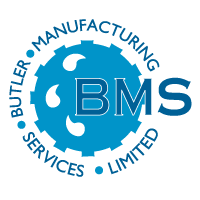Sewage Parameters 6 Part 2: Total Nitrogen
Hi,
Today we are going to discuss how to actually denitrify (the conversion of NO3 to Nitrogen (N) and Oxygen (O2) gas which is given off in the atmosphere) which is the second step in the process to lower Total Nitrogen in treated sewage effluent and is termed Denitrification.The total Nitrogen reduction process has been explored in depth in some previous articles;1. Sewage Parameters 6 Part 1: Total Nitrogen2. Sewage Parameters 5 Parts 1 & 2: Ammonia (NH4)As regards package sewage treatment, denitrification is a much more tricky process than nitrification as it only takes place in the presence of specific conditions:Firstly, effluent needs to be rich in nitrates (NO3) after being nitrified from ammonia (NH4)Secondly, a carbon source is required for bacteria to respire (utilising a carbon source to produce energy)Thirdly, an anoxic environment needs to be present. This is distinct from an anaerobic environment in that some oxygen may be present but no active aeration of the nitrate rich effluent can take place.If all three are achieved certain species of bacteria can respire using Nitrogen instead of oxygen, which ultimately leads to conversion of nitrates to nitrogen (N2) and oxygen (O2) gas, which is given off in the atmosphere, thus lowering total nitrogen levels. Respiration using nitrogen is not as energy efficient as with oxygen, so if oxygen levels rise enough, nitrification will be inhibited. It therefore is a process with many variables which need to be controlled to achieve denitrification.Normal practice to achieve denitrification involves placing an anoxic tank, which was sized to take 8 hours of the average flow into plant at the inlet of the sewage treatment plant thus providing a carbon source in the form of incoming sewage. Nitrified effluent from the outlet of the sewage treatment plant then needs to be recirculated to the inlet of the anoxic tank. A 50:50 mixture of sewage and nitrified effluent is normally contained in the anoxic tank, where if anoxic conditions are in place, denitrification should take place.The process creates both oxygen and nitrogen gas, which needs to be removed to maintain anoxic conditions and to lower the total nitrogen level. This is normally achieved by a submerged mixing pump. The process often requires adjustment and is also temperature sensitive. Many systems will also require pumps to pump the effluent forward to the primary treatment plant and also the nitrified effluent back to the inlet.The BMS Blivet package wastewater treatment plant uniquely generates net hydraulic lift from inlet to outlet, this means that nitrified effluent can be recirculated under gravity rather than by pumping. BMS have incorporated an extended primary settlement area into a denitrifying version of the Blivet, which acts as an anoxic zone so that the whole process (nitrification and denitrification) can be achieved along with BOD and SS reduction in one single, low energy, easy to maintain package sewage treatment plant, without the requirement for expensive extra pumps or separate tankage. The incoming sewage into the Blivet is the carbon source and the nitrified effluent recirculates under gravity from the outlet of the Blivet where it mixes with the carbon source. The BMS Denitrifying Blivet can achieve effluent in the region of BOD 10 mg/l SS 10 mg/l Ammonia 5 mg/l Total Nitrogen of 10 mg/l or better if required.BMS are also working on an innovative denitrifying filter to be placed after the main treatment plant, which is now in it final stage of testing, to achieve excellent all round effluent quality, without the need for recirculation and will be suitable for both new or existing plants.
A bit about the company:
Butler Manufacturing Services is a family owned specialist manufacturer of package (all in one) products for sewage treatment and surface water treatment established in 1986 with exports to 38+ countries worldwide including the world leading Blivet package sewage treatment plant, a ‘one stop shop’ for all surface water products from design to installation including attenuation, interceptors, holding tanks (incl. chemical resistant), hydrobrakes, rainwater harvesting tanks/filters & vortex silt separators, chlorine contact tanks, fully fitted pump stations and pumps, our 'all in one' vehicle wash water recycling system with zero discharge and much more.If there is a requirement for any of above on any project that you are working on we would welcome the opportunity to work on a solution with you.© Butler Manufacturing Services 2013.

